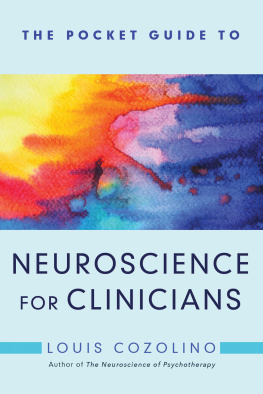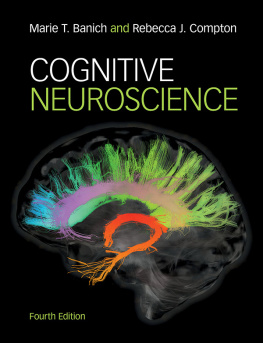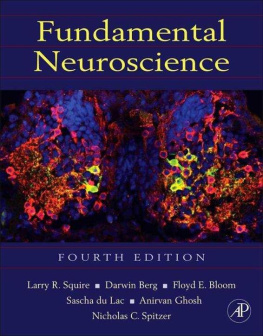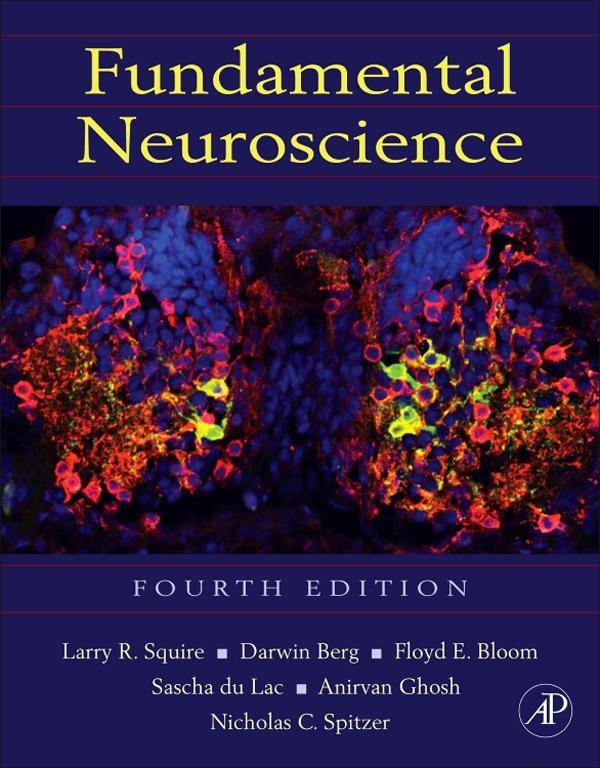Fundamental Neuroscience
Fourth Edition
Edited by
Larry R. Squire
VA Medical Center San Diego, California, University of California, San Diego, La Jolla, California
Darwin Berg
University of California, San Diego, La Jolla, California
Floyd E. Bloom
The Scripps Research Institute, La Jolla, California
Sascha du Lac
The Salk Institute, La Jolla, California
Anirvan Ghosh
University of California, San Diego, La Jolla, California
Nicholas C. Spitzer
University of California, San Diego, La Jolla, California

Table of Contents
Copyright
Academic Press is an imprint of Elsevier
225 Wyman Street, Waltham, MA 02451, USA
The Boulevard, Langford Lane, Kidlington, Oxford, OX5 1GB, UK
2013 Elsevier Inc. All rights reserved.
No part of this publication may be reproduced or transmitted in any form or by any means, electronic or mechanical, including photocopying, recording, or any information storage and retrieval system, without permission in writing from the Publisher. Details on how to seek permission, further information about the Publishers permissions policies and our arrangements with organizations such as the Copyright Clearance Center and the Copyright Licensing Agency, can be found at our website: www.elsevier.com/permissions.
This book and the individual contributions contained in it are protected under copyright by the Publisher (other than as may be noted herein).
Notices
Knowledge and best practice in this field are constantly changing. As new research and experience broaden our understanding, changes in research methods, professional practices, or medical treatment may become necessary.
Practitioners and researchers must always rely on their own experience and knowledge in evaluating and using any information, methods, compounds, or experiments described herein. In using such information or methods they should be mindful of their own safety and the safety of others, including parties for whom they have a professional responsibility.
To the fullest extent of the law, neither the Publisher nor the authors, contributors, or editors, assume any liability for any injury and/or damage to persons or property as a matter of products liability, negligence or otherwise, or from any use or operation of any methods, products, instructions, or ideas contained in the material herein.
Library of Congress Cataloging-in-Publication Data
Fundamental neuroscience / edited by Larry Squire [et al.]. 4th ed.
p. cm.
Includes bibliographical references and index.
ISBN 978-0-12-385870-2 (alk. paper)
1. Neurosciences. I. Squire, Larry R.
QP355.2.F862 2012
612.8dc23
2012020285
British Library Cataloguing-in-Publication Data
A catalogue record for this book is available from the British Library.
Cover Image: The confocal image shows dopaminergic (green) and GABAergic (red) neurons in the developing Xenopus accessory olfactory bulb that mediate kinship recognition among siblings. The number of dopaminergic and GABAergic neurons changes in response to sustained exposure to olfactory stimuli. Courtesy of Davide Dulcis and Nicholas Spitzer.
For information on all Academic Press publications visit our website: http://store.elsevier.com
Printed in China
12 13 14 15 16 10 9 8 7 6 5 4 3 2 1

List of Boxes
Preface to the Fourth Edition
In this fourth edition of Fundamental Neuroscience, we have tried to improve on the third edition with a volume that effectively introduces students to the full range of contemporary neuroscience. Neuroscience is a large field founded on the premise that all of behavior and all of mental life have their origin in the structure and function of the nervous system. Today, the need for a single-volume introduction to neuroscience is greater than ever. Toward the end of the twentieth century, the study of the brain moved from a peripheral position within both the biological and psychological sciences to become an interdisciplinary field that is now central within each discipline. The maturation of neuroscience has meant that individuals from diverse backgroundsincluding molecular biologists, computer scientists, and psychologistsare interested in learning about the structure and function of the brain and about how the brain works. In addition, new techniques and tools have become available to study the brain in increasing detail. New genetic methods have been introduced to delete or overexpress single genes with spatial and temporal specificity. Neuroimaging techniques such as functional magnetic resonance imaging (fMRI) have been developed that allow study of the living human brain while it is engaged in cognition.
This fourth edition attempts to capture the promise and excitement of this fast-moving discipline. All the chapters have been rewritten and updated. The volume begins with an opening chapter that provides an overview of the discipline. A second chapter presents fundamental information about the architecture and anatomy of nervous systems. The remainder of the volume (Sections IIVII) presents the major topics of neuroscience. The second section (Cellular and Molecular Neuroscience) considers the cellular and subcellular organization of neurons, the physiology of nerve cells, and how signaling occurs between neurons. The third section (Nervous System Development) includes discussion of neural induction, cell fate, migration, pathfinding, synapse formation, programmed cell death, synapse elimination, development of dendrites, and early experience, including critical periods. The fourth and fifth sections (Sensory Systems and Motor Systems) describe the neural organization of each sensory modality and the organization of the brain pathways and systems important for locomotion, voluntary action, and eye movements. The sixth section (Regulatory Systems) describes the variety of hypothalamic and extra-hypothalamic systems that support motivation, reward, and internal regulation, including respiration, food and water intake, neuroendocrine function, circadian rhythms, and sleep and dreaming. The final section (Behavioral and Cognitive Neuroscience) describes the neural foundations of the so-called higher mental functions, including perception, attention, memory, language, spatial cognition, and executive function. Additional chapters cover human brain evolution, cognitive development and aging, and consciousness. The chapters contain more than 100 Boxes that describe clinical conditions, techniques, and special topics related to chapter content. The volume is also accompanied by companion websites for students and instructors, which present all the Figures and Boxes. In addition, the instructors website includes sample test questions for each chapter that draw attention to the key facts and concepts in the chapters.
The authors of the chapters and boxes are working scientists, experts in the topics they cover. The Editors edited the chapters to achieve consistency of style and content. At Academic Press/Elsevier Science, the project was coordinated by Mica Haley (Acquisitions Editor), and we are grateful to her for her leadership and advice throughout the project. In addition, April Graham (Editorial Project Manager) very capably and efficiently supervised the development of the book, and Lisa Lamenzo (Project Manager) expertly coordinated its production.












